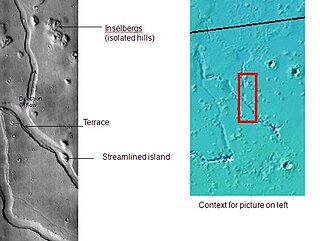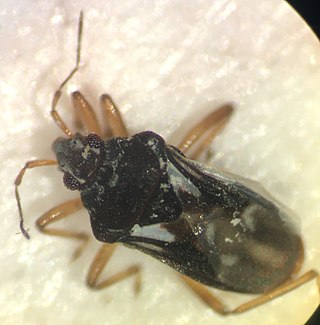
Aristosuchus is a genus of small coelurosaurian dinosaur whose name was derived from the Greek ἄριστος and σουχος. It shared many characteristics with birds.

The blurred lanternshark is a little-known species of dogfish shark in the family Etmopteridae, found around the world in benthic and pelagic habitats from a depth of 110 m (360 ft) to over 1 km (0.62 mi) down. This shark forms the E. pusillus species group with the smooth lanternshark, which are distinguished from other members of its family by having irregularly arranged, flat-topped dermal denticles that give them a "smooth" appearance. Both species are slender-bodied with long heads, two dorsal fins bearing spines, no anal fins, and light-emitting photophores. The blurred lanternshark is larger, reaching 67 cm (26 in) or more in length. This species feeds on small squid, fishes, and fish eggs, and is ovoviviparous. It has been assessed as of Least Concern by the International Union for Conservation of Nature, because of its wide distribution and lack of threat from fishing pressure.

The smooth lanternshark or slender lanternshark is a species of dogfish shark in the family Etmopteridae, found widely in the Atlantic and Pacific Oceans. It inhabits benthic environments at a depth of 274–1,000 m (899–3,281 ft), and pelagic environments at a depth of 0–708 m (0–2,323 ft). The smooth lanternshark forms a species group with the larger blurred lanternshark, both of which are distinguished from other members of their family by small, irregularly arranged dermal denticles with a truncated shape. This species has a slender, dark brown body with an indistinct black band on the sides over the pelvic fins, and reaches 50 cm (20 in) in length. This slow-growing, ovoviviparous shark feeds on smaller squid, fishes, and fish eggs. Smooth lanternsharks are often caught as bycatch in eastern Atlantic and Japanese commercial fisheries. The International Union for Conservation of Nature (IUCN) has evaluated this species as of Least Concern because of its wide distribution and limited threats.

Velvet water bugs are members of the family Hebridae. They are semiaquatic insects that live among moss or ponds with an abundance of vegetation, in which they prey on small arthropods. Velvet water bugs are the smallest of the Gerromorpha, and have an appearance of tiny veliids. Hebrids sometimes move across water surfaces, but walk or run rather than skate or scull on the surface.

The Hebrus Valles are an ancient system of troughs and valleys in the Amenthes quadrangle of Mars, located at 20.2° north latitude and 233.4° west longitude. They are 317 km long and were named after a river in the Balkans which runs through present day Bulgaria, Greece and Turkey. Some authors have identified the troughs and valleys of Hebrus Valles as outflow channels, but their origin and history remain ambiguous. It has been considered as a potential site for human exploration due to the presence of icy caves.

Hebrus is a genus of velvet water bugs in the family Hebridae. There are at least 160 described species in Hebrus.
Eotettix pusillus, the little eastern grasshopper, is a species of spur-throated grasshoppers in the family Acrididae. It is found in North America.
Gymnoscirtetes pusillus, the little wingless grasshopper, is a species of spur-throated grasshopper in the family Acrididae. It is found in North America.

Peritrechus is a genus of dirt-colored seed bugs in the family Rhyparochromidae. There are at least 20 described species in Peritrechus.

Epeolus pusillus is a species of cuckoo bee in the family Apidae. It is found in the United States and Mexico.
Temnostethus is a genus of minute pirate bugs in the family Anthocoridae. There are about eight described species in Temnostethus.
Hebrus buenoi, or Bueno's velvet water bug, is a species of velvet water bug in the family Hebridae. It is found in Central America and North America.
Hebrus burmeisteri is a species of velvet water bug in the family Hebridae. It is found in Central America and North America.

Hebrus consolidus is a species of velvet water bug in the family Hebridae. It is found in the Caribbean Sea, Central America, and North America.

Hebrus ruficeps is a Palearctic species of true bug. It is aquatic.










